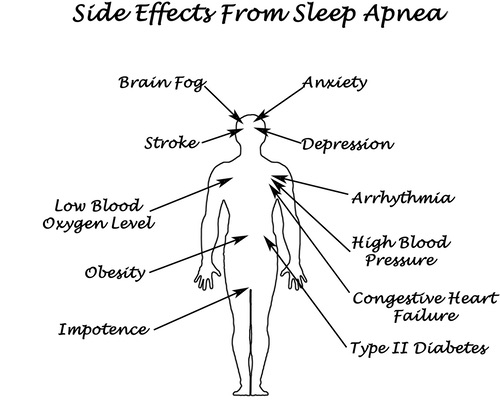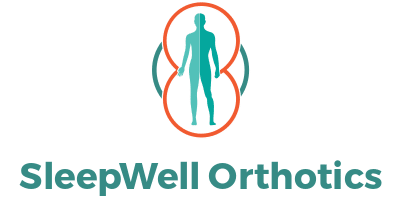What Is Sleep Apnea

Causes Of Sleep Apnea
Sleep apnea occurs as a result of a partial or fully blocked airway passage in the throat. Certain factors may put certain people at risk for developing sleep apnea, which include:
- Enlarged tonsils or adenoids
- Obesity
- Cardiovascular problems
- Throat and tongue muscles that are more relaxed than normal
- Deviated septum
- Receding chin
- Poorly aligned teeth
- Family history
- Nasal congestion and Allergies
Adults over the age of 60 may be more at risk of developing sleep apnea because the aging process may limit the brain’s ability to keep the throat muscles stiff during sleep.
Heavy use of alcohol or sedatives may also contribute to sleep apnea because these substances may relax the muscles of the throat.
While the typical Sleep Apnea patient is an overweight male over 50 years old with high blood pressure, I see plenty of thin, young, healthy-looking females that love to work out at the gym daily, yet are exhausted most of the day! They are more often wrongly diagnosed with psychological problems like depression, anxiety and hypochondria.
Obesity and Sleep Apnea
Why are so many sleep apnea patients heavy, and why do so many heavy people have sleep apnea? Which came first, the proverbial chicken and the egg question. When a person is sleep deprived, she produces less Leptin, the hormone that tells us to STOP eating. Instead, she produces more Ghrelin, the hormone that makes us feel hungry. A sleep deprived person’s cells become more insulin resistant, which blocks their ability to deliver energy giving glucose. This can also lead to diabetes. It’s a vicious cycle: Eating more leads to further weight gain, which leads to worsening sleep apnea. So really, it doesn’t matter which came first. Fix one and the other will improve!
Types Of Sleep Apnea
There are different types of sleep apnea that have different causes.
Obstructive Sleep Apnea
Obstructive sleep apnea (OSA) is the most common form of sleep apnea. It occurs when the soft tissue at the back of the throat closes, blocking or obstructing the airway.
Central Sleep Apnea
In patients with central sleep apnea the airway remains open but the brain does not send signals to the muscles involved in breathing. Patients with heart-related conditions may suffer from central sleep apnea.
Mixed Sleep Apnea
Mixed sleep apnea combines aspects of the obstructive and central types of apnea.
Patients who are overweight, have high blood pressure, are older, smoke or have a family history of sleep apnea may have an increased risk of developing obstructive sleep apnea, while those with heart disease or a stroke are at an increased risk for central sleep apnea.
Symptoms Of Sleep Apnea

- Loud snoring
- Waking up with a dry mouth or sore throat
- Morning headaches
- Insomnia
- Abrupt awakenings during the night
- Not feeling alert as soon as you awaken
- Multiple nightly awakenings to urinate
- Difficulty concentrating or remembering
- Reduced libido and/or impotence
- Uncharacteristic moodiness, depression or irritability
- GERD, Reflux or Heartburn
- Hypertension
- History of Stroke or TIA
- Arrhythmias
- Diabetes or pre-Diabetes
- Coronary Artery Disease
- Congestive Heart Failure
- ADHD
- Night Terrors
Individuals with sleep apnea may experience shortness of breath that awakens them from sleep.
